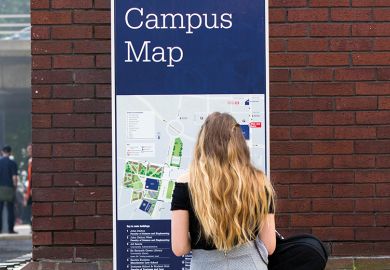Cursory pastoral care leaves Chinese students bewildered by the practicalities of living and studying in Australia, intensifying their estrangement from the locals that many hoped to call friends, according to an academic.
Fran Martin, reader in cultural studies at the University of Melbourne, says inadequate welfare and resettlement advice for Chinese learners, who comprise one in 10 students at the average Australian institution, leaves many “floundering”.
In an essay to be published this month by the Asia Society Australia, Dr Martin says some universities may advise freshly arrived students about navigating the health and legal systems, and about dealing with exploitative employers and landlords. But the guidance “is generally provided all at once” and usually only in English.
“At that time and in that format, it can be difficult for students to take it in. When a crisis strikes, they often find themselves unprepared,” she writes.
This leaves Chinese learners “struggling to know where to turn” in emergencies, Dr Martin told Times Higher Education.
The “linguistic and cultural gap” also affects students grappling with more mundane issues from stress to the flu. Chinese students do not necessarily know, for example, that the first port of call in Australia’s health system is not a specialist or hospital but the local doctor.
Dr Martin cited a “petty crime wave” two years ago in Melbourne. “Chinese students had their phones stolen by local youths and felt the police were ignoring them because the response was different to what they would have expected in China. On social media they were saying: ‘They don’t care about us. It’s because we’re not local. It’s because we’re not white,’” she said.
“There are hundreds of thousands of young people coming here from a completely different system and misunderstanding the Australian response to various issues. A sense of belonging or being cared for – that’s often what’s missing.”
This exacerbates the “mutual disengagement” afflicting many Australian campuses, where different groups of students practise forms of “self-segregation”. Dr Martin, who is researching the experiences of 50 Chinese students at eight Australian universities, said that this was the opposite of what the visitors had envisaged.
“I interviewed my participants before they left China. Almost with one voice they said they were looking forward to making local friends,” she said.
“After they arrived, there was a period of disillusionment. The locals were really hard to engage. They seemed polite but not warm – basically uninterested in forming deeper friendships.”
Dr Martin said that Australian academics needed guidance in building intercultural bridges. “As academics, we need to be trained in how to manage the international classroom,” she said.
Register to continue
Why register?
- Registration is free and only takes a moment
- Once registered, you can read 3 articles a month
- Sign up for our newsletter
Subscribe
Or subscribe for unlimited access to:
- Unlimited access to news, views, insights & reviews
- Digital editions
- Digital access to THE’s university and college rankings analysis
Already registered or a current subscriber?








